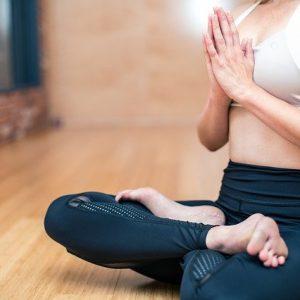
Contents
Yoga And Meditation For Grieving
At the time when someone is grieving, it is natural for them to seek comfort. So that they can come to terms with what happened to them. They need to find peace and it is important they do that at the earliest. In times like this, yoga can be of extreme importance.
Since yoga is so far from being just a physical exercise. It is one of the most holistic ways to heal and improve your being at the mind, body and soul level. Yoga has many aspects that help in healing the physical, mental and spiritual self.
The symptoms that are faced as a result of prolonged grief can assist in reducing the stress reaction. Which can in turn help in helping the mind, body, and soul stay at peace. The sensation that is experienced while stretching helps in allowing the mind to focus rather than staying stuck on the thoughts of past, present, and future. Extensively taught in courses like yoga teacher training India, these poses are often used when a person is looking for relief from the grief.
Although there is a yoga sequence that helps in reducing the pain of a person on a mental, spiritual and physical level. It is necessary to understand there is no limitation to these yoga poses. Since everyone has a different reaction when they experience loss, the reaction that is produced by everyone is different. People should take charge of their bodies to understand what feels good and what does not. In addition to the yoga poses mentioned below, any asana that helps in making a person feel good is good enough for treating the grief.
Read Also: How To Do Yoga? Total Guide
balasana
While experiencing any kind of grief, one can practice the Balasana or the Child pose. This yoga asana includes whatever the body wishes to do on an organic level at the time when a person is going through stress which is curling in.
Come on your shin while making sure that the top of your feet stays on the floor. At this moment, bring both your toes back together with each other. While making sure that your knees are apart from each other. Now shift your hips back in the direction of your heels so that you arms can reach in front of you. Rest your forehead on a block so that your brain experiences calmness. It will be helpful to stay on your fingertips so that there is space in your neck and your shoulders. Stay in this position for as long as you want.
sukhasana
Let your brain rest while you being to release your hips. Since the body begins to contract after experiencing any trauma. Holding your body for a long time is a gentle and simple way to open it. You can begin by sitting on a yoga mat or a folded blanket.
While keeping your legs crosses so that your right shin is on your left one and rests on your ankles. Firmly flex both of your ankles so that your knees stay protected. On a deep inhalation, start by reaching your arms on the way up to the ceiling and start exhaling by folding your legs and resting the forehead back on the floor. Now stay in the same position at least for 25 long breaths. While inhaling eventually as you come up and switch your sides.
uttanasana
You can start by reconnecting to both of your legs while resuming strength and peace as you stay in this position. While you are at the back of the yoga mat. Make sure that your hips are wide apart and you fold your legs on a deep exhalation.
In case you can then start by resting the crown of your head on a firm block. So that you feel immensely restorative or you can simply let your head hang. You will notice that your arms will start to feel loose as your palms are on the floor or as you clasp them together in the opposite direction of your elbows. Stay in this position for at least 15 long breaths as you round off your way to standing very gradually. Allow your head to be the last thing that comes up and stand in the upright position for some moments before you move on to the next pose.
PARSVOTTANASANA
While standing in front of your mat when you are in the Tadasana exhale deeply and step in the left direction of your left foot in the backward direction. Turn your back foot on the inside at an angle of 45 degrees as you place your hand on your hips. On a deep inhalation, lift your chest, fold both your legs and put your hands on the blocks or the floor.
In case your arms are long then you may also walk with your hands in the direction of the back foot. Lengthen your torso in the direction of your front leg so that you reach your chest to the front foot. Stay in this position for at least 20 breaths. On the next inhalation, reach halfway up and bring your hands in the direction of your hips. Inhale and step your back foot to the top of the mat so you can repeat the same pose on the other side.
JANU SIRASANA
A simple but amazingly comforting yoga pose, Janu Sirasana will have you feeling like you are resting upon yourself. You can start by being on a blanket as both of your legs are straight out in the direction of the Dandasana. Now bend your right knee and turn your thigh in an open direction so that your right heel feels pulled in the upward direction of your groin.
On a deep inhalation, start by reaching your arms in the direction of your sky and exhale as you fold your left thigh. You can grab your opposite wrist or just bend your elbows on the floor in a very simple way. Reach out to the top of your head to your foot. Stay in this position for around 25 breaths and as you inhale, sit in an upright position. Stretch your right leg in the outward direction and pause before you switch your sides.
RESTORATIVE PASCHIMOTTANASANA
You can go further in the inward direction with a back body lengthener. This yoga pose will not help in releasing your thighs but it will also help in postural muscles that work so hard all the time while keeping your head in the upward direction.
Sitting in the Dandasana on a yoga mat will help you separate your legs as they stay wide apart. Place your legs in a direction close to your shins. On a deep inhalation, you can reach your arms in the upward direction and on a deep exhalation; you can fold you both legs. You can now flip the block so that your head can rest your forehead on it. Make sure that your arms are resting by your sides so that your elbows are bent while releasing the muscles of the upper back or reaching to grab your foot. Take around 20 breaths before you can slowly inhale as you come back with a long spine.
SAVASANA
This yoga sequence can be ended with a Savasana or a corpse pose which is the reason why many people can return to the yoga class after they experience it for the first time. This is called the best yoga pose for grief since it helps in relieving the stress and grief in the best possible way. Savasana will allow your body and mind to integrate with the yoga practice. This pose calls in mindful stillness and all you have to do is lie down and receive the gift of yoga.
The Bottom Line
You can end the yoga sequence with a session of meditation so that your mind, body, and soul achieves ultimate peace. It will help you move over all the chatter of your mind while allowing your soul to completely shift all your thoughts of love. Join yoga teacher training in Rishikesh to experience the magic and you will feel it coming through your being. Published By Healthzigzag.com
Read Also: How To Reduce Hair Fall With Yoga?




